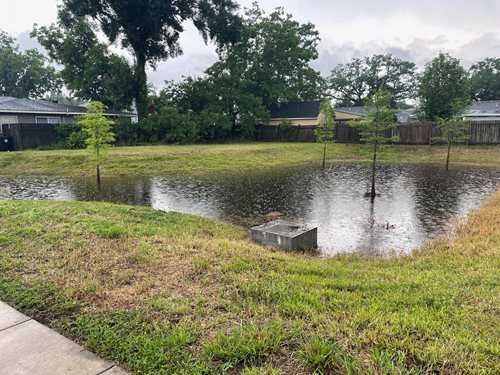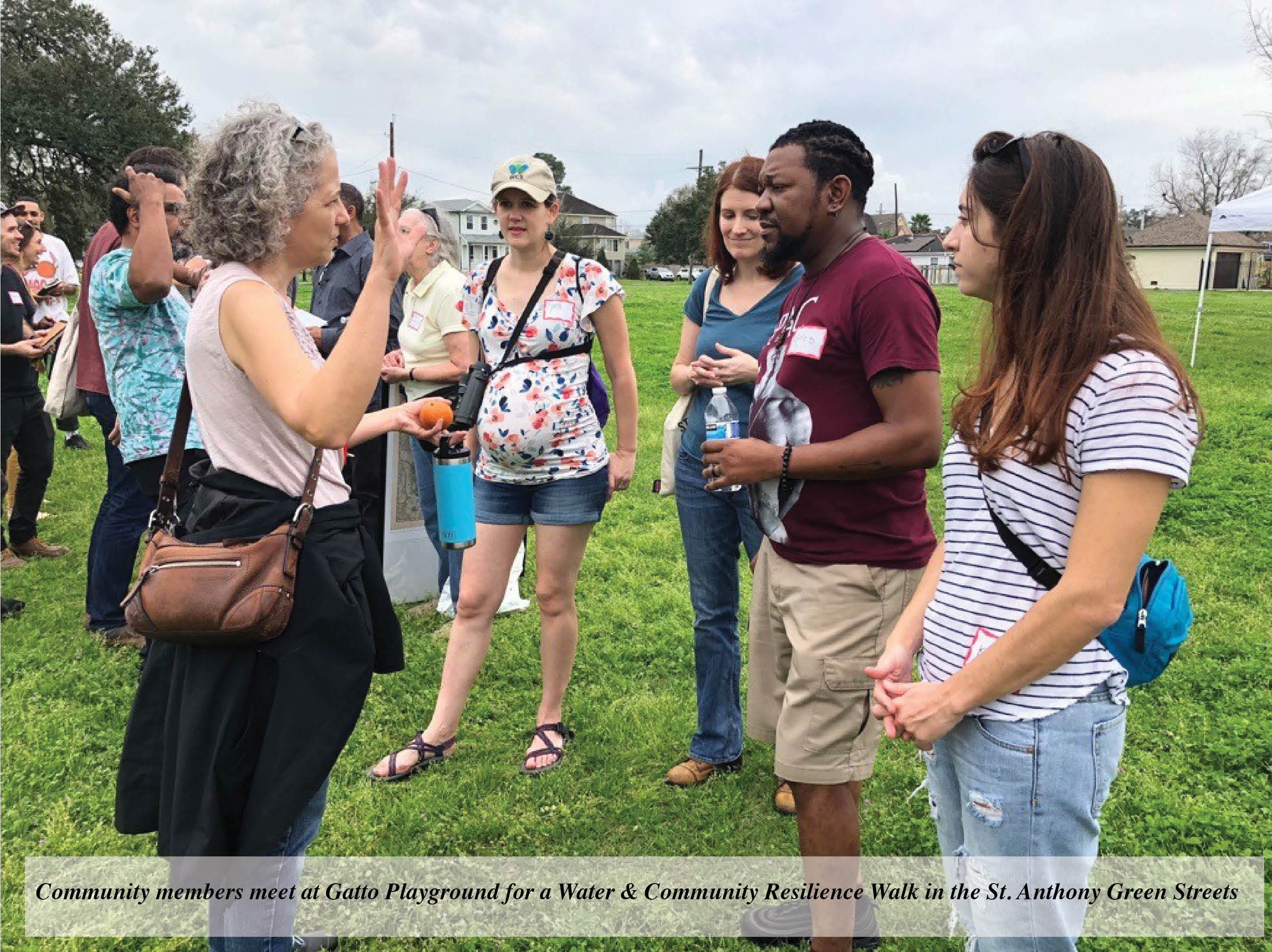What Does Our Department Do?
The Stormwater and Green Infrastructure (SGI) Department implements a combination of nature-based and innovative construction designs to reduce residents’ vulnerability to flooding and the overall burden on the City’s piping, drainage, and pumping systems (grey infrastructure). We leverage federal, state, and city funds to support and supervise contractors in constructing these projects.

Advancing Green Infrastructure
The City of New Orleans deploys innovative “green” water management solutions to absorb runoff, filter pollution and mitigate flooding threats through natural methods. Beyond practical stormwater functionality, these nature-based projects also nurture wildlife, cool neighborhoods, purify air and enhance community spaces – improving quality of life across species.
From rain gardens to bioswales to wetland preservation, we take inspiration from the regional ecosystems native plants and soil naturally fostered. Mimicking wetlands ecology helps remedy subsidence issues plaguing Southeast Louisiana's shifting delta soils for centuries while reigniting cultural connections to the abundant yet fragile biodiversity sustaining life here.
Learn more about the potential for green infrastructure to sustainably strengthen resilience, public health and place-based pride by watching the video below. The future of New Orleans lies in harmonizing engineering with ecology through regenerative design thinking.
What is Green infrastructure?
Green infrastructure is an umbrella term to describe natural and human-made features that provide environmental and social benefits related to water management. Here in New Orleans, these features slow the speed of water, temporarily store it, quicken its absorption into soil, and filter it before or at the same time as water enters a drainage system. During an intense storm event, green infrastructure complements grey infrastructure by providing entry points for excess water to be distributed and absorbed across the natural landscape instead of overwhelming the drainage system.
Green infrastructure relies on three functional processes: detention, infiltration, and filtration.
-
Detention occurs when excess water is stored temporarily, bypassing the drainage system altogether or allowing sufficient time to pass so water can move through it with less backflow or “traffic.”
-
Infiltration is the steady, downward movement of water through soil from the surface to subsurface levels, where it remains stored underground in the water table or aquifer.
-
Filtration is the cleaning of water as it travels through soil by chemical, geological, and biological processes. Soil itself is an assemblage of living organisms, ranging in size from microscopic fungi to invertebrates, that decompose pollutants over time.

What Are Some "Co-Benefits" of Green Infrastructure?
The benefits of green infrastructure projects are often reduced to a site's ability to manage stormwater. When looking beyond mere benefits of water storage, the additional contributions are numerous and overlapping.
Green infrastructure projects can:
- reduce flooding impacts to municipal and private properties;
- reduce stormwater management and drinking water treatment costs;
- reduce urban heat island effect;
- improve drinking water quality;
- improve air quality;
- provide workforce development opportunities for economic growth;
- improve public health;
- improve quality of life;
- capture carbon and help combat climate change;
- improve ecosystem health; and
- reduce the risk of subsidence (sinking).
In addition to environmental benefits, these projects can create recreational & social spaces that connect the community – which encourages community gathering and stewardship to spur neighborhood revitalization.
The Trust for Public Land recently conducted a report on the environmental, social, and economic benefits of green infrastructure in New Orleans.
Read the Trust for Public Land's report here
